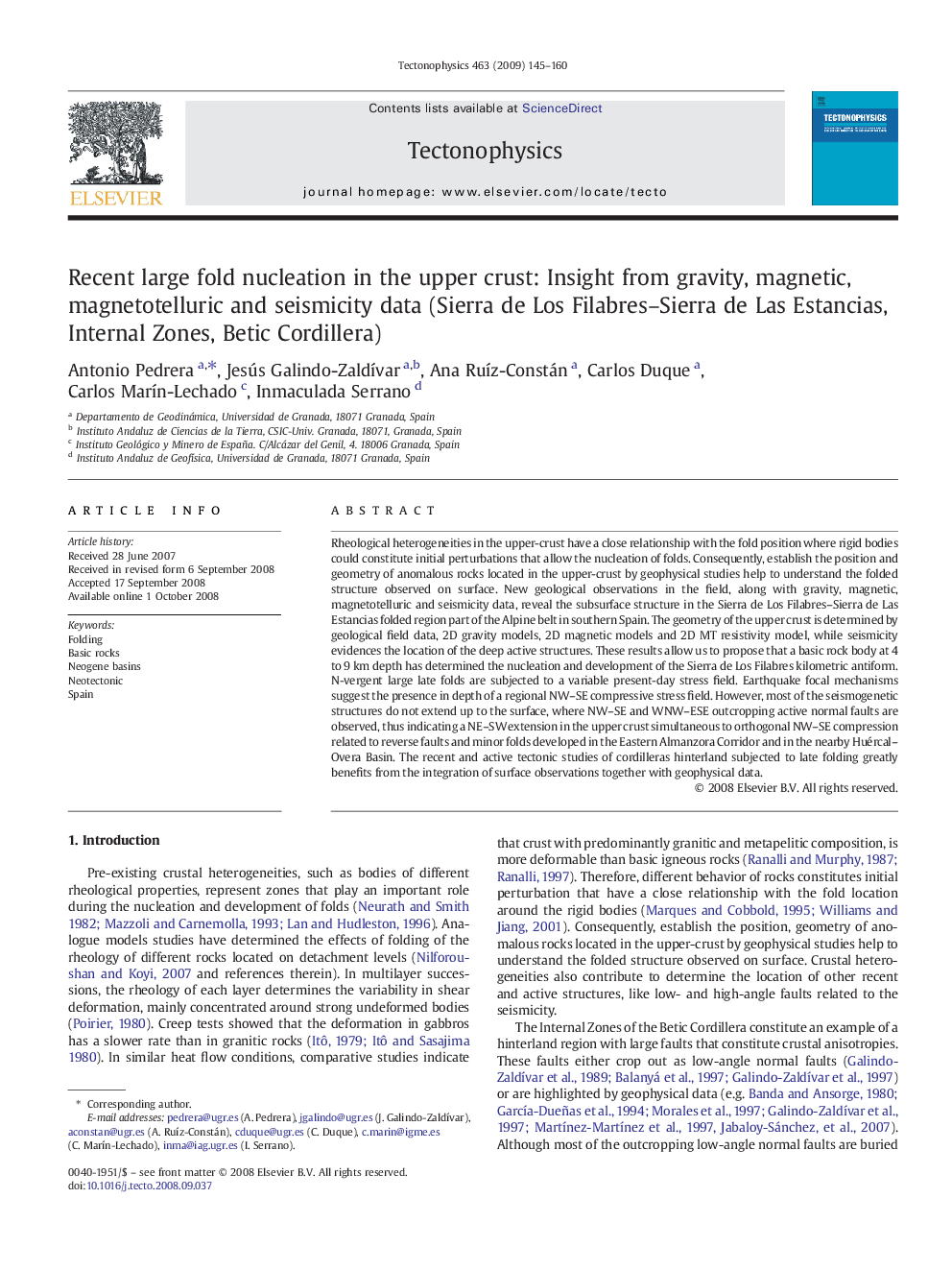| Article ID | Journal | Published Year | Pages | File Type |
|---|---|---|---|---|
| 4694342 | Tectonophysics | 2009 | 16 Pages |
Rheological heterogeneities in the upper-crust have a close relationship with the fold position where rigid bodies could constitute initial perturbations that allow the nucleation of folds. Consequently, establish the position and geometry of anomalous rocks located in the upper-crust by geophysical studies help to understand the folded structure observed on surface. New geological observations in the field, along with gravity, magnetic, magnetotelluric and seismicity data, reveal the subsurface structure in the Sierra de Los Filabres–Sierra de Las Estancias folded region part of the Alpine belt in southern Spain. The geometry of the upper crust is determined by geological field data, 2D gravity models, 2D magnetic models and 2D MT resistivity model, while seismicity evidences the location of the deep active structures. These results allow us to propose that a basic rock body at 4 to 9 km depth has determined the nucleation and development of the Sierra de Los Filabres kilometric antiform. N-vergent large late folds are subjected to a variable present-day stress field. Earthquake focal mechanisms suggest the presence in depth of a regional NW–SE compressive stress field. However, most of the seismogenetic structures do not extend up to the surface, where NW–SE and WNW–ESE outcropping active normal faults are observed, thus indicating a NE–SW extension in the upper crust simultaneous to orthogonal NW–SE compression related to reverse faults and minor folds developed in the Eastern Almanzora Corridor and in the nearby Huércal–Overa Basin. The recent and active tectonic studies of cordilleras hinterland subjected to late folding greatly benefits from the integration of surface observations together with geophysical data.
